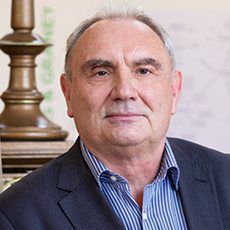
By John Tingle, Assistant Professor, Birmingham Law School, University of Birmingham
Unsafe health care is a global as well as a national NHS problem. The World Health Organisation, (WHO) have recently published their Global Patient Safety Report 2024 presenting important insights into the current state of patient safety across the world. The report is closely aligned to their Global patient safety action plan 2021–2030 providing updates on how the calls for action, ambitions, challenges made there are being met. The plan has 7 strategic objectives along with 35 supporting strategies. Strategic objective 1 for example calls for a zero-harm state of mind and a rule of engagement in the planning and delivery of health care everywhere (p.viii).
Other strategic objectives include those dealing with high-reliability systems, safety of clinical processes, patient, and family engagement and so on.
WHO Global Patient Safety Report 2024
The WHO Global Patient Safety Report 2024 encompasses a wide range of subjects and themes in its 354 pages. Sections in the report include burden of harm to the patients, financial and economic burden of unsafe care, policies to eliminate avoidable harm in health care, high reliability systems, safety of clinical processes and so on.
“The methodology of the report is grounded in the first ever global patient safety survey conducted by the WHO. This survey was a pivotal effort in assessing the implementation of the action plan across Member States.” (p.xxvii)
The global patient safety problem
The acute nature of the global patient safety problem is stated in the report’s executive summary:
“Unsafe care is a major public health problem that affects millions of patients worldwide, with estimates suggesting that more than one in ten patients suffer from adverse events… As much as 12% of harm causes permanent disability or patient death. “(xxvii).
The report further states that latest estimates indicate that annually, unsafe care causes globally more than 3 million deaths and that around half of all harm due to unsafe care is preventable.
These are acutely concerning figures and compound the need for all countries to take urgent steps to improve patient care and develop proper patient safety cultures in their health systems. No country is immune from patient safety failures. Country resources are a key issue here and the report makes this point several times:
“The burden of unsafe care disproportionately affects low- and middle-income countries, where the majority of patient harm and associated deaths occur.” (p.13)
The geographic distribution of harm in health care is a key issue discussed.
No one size fits all approach to global patient safety.
There cannot be a one size fits all approach to global patient safety culture development systems. Countries clearly have different resource levels; some are more mature at patient safety policy development and practice than others. All this variability needs to be taken into account when reading the report.
Comparisons are still useful.
Comparisons are still useful and general themes can be drawn from the report about countries activities in health regulation, governance, and patient safety. This will all be useful for NHS policy makers and practitioners in patient safety helping them avoid reinventing the wheel, using scarce NHS resources when there are already well established, tried, and tested solutions existing in other countries.
A Key finding in the report is on the importance of health care safety cultures and actions to promote:
“-A safety culture in health care is recognized as crucial by most countries, yet only a quarter of countries reported to have made efforts towards developing a culture of safety in health care facilities and services. (p.xxix).”
The report also found that around 70% of countries have either developed or are in the process of developing patient rights charters at the national level. Patient safety incident reporting and learning systems have been introduced in 70% of countries. However, these are limited in effectiveness. The report states that only in one third of countries do the majority of health care facilities actively report safety incidents to these systems. Legal protection against reporting of patient safety incidents is also discussed:
“One of the barriers to improving patient safety is the fear of legal consequences.
for reporting adverse events or errors.” (p.56)
No blame policy and just culture country policies are discussed and country informed consent policies. The report states that according to survey response, around one quarter of countries have made sustained efforts to implement no blame policies. Seventeen per cent, the report states, have made sustained efforts to implement a just culture in health care facilities and services. Only 10% of countries reported having guidelines offering psychological support to patients and others affected by a serious patient safety incident.
In terms of patient safety research, this is very much a doom and gloom finding globally. The report states that only 11% of countries considering it a priority, although some integrate safety risk assessments in health technology evaluations.
There are many other detailed findings on matters in the report.
Conclusion
Globally and nationally in England in the NHS developing a proper NHS patient safety culture is never going to be an easy task. There is a plethora of complex and sometimes seemingly intractable issues that need resolved. The 2024 WHO patient safety report paints a mixed picture of global progress. There are things to celebrate in the report as well as negatives that require urgent attention. The report is to be welcomed as a valuable source of key patient safety information.
This blog is based on one of my fortnightly opinion columns for the British Journal of Nursing.
